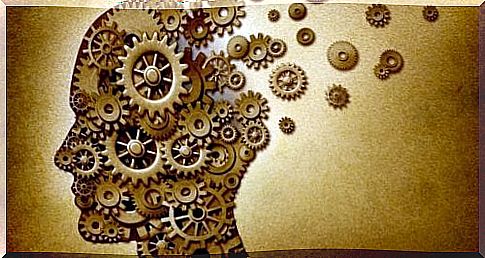The Sins Of Memory By Daniel Schacter

Research by Daniel Schacter, a researcher, cognitive psychologist and professor of psychology at Harvard University, argues that our memory is prone to falling into seven errors, common to all humans. He calls these errors the seven sins of the mindful.
Daniel Schacter explains that remembering and retrieving memories is a constructive activity. Emphasize that the human memory system is not perfect, it has its flaws and we all suffer from memory problems in our daily life.
In his book The Seven Sins of Memory , Schacter classifies various memory distortions into seven basic categories.
Call these seven categories of memory distortion: lability, distraction, block, misattribution, suggestibility, distortion, and persistence.
However, “these memory distortions are not to be seen as errors in system design, but can be conceptualized as by-products of desirable characteristics of human memory.”
In this sense, Schacter points out that there is evidence that memory meets the needs of the present and that the past is being reshaped by current knowledge, beliefs and emotions. Memory errors are as fascinating as they are important.
These sins often occur in everyday life and in themselves do not indicate a pathology. The problem is that the consequences that derive from these memory sins are not desirable.

Daniel Schacter and the 7 sins of memory
Schacter states that memory malfunction can be broken down into seven fundamental transgressions or sins. On the one hand, there are the sins of omission, which are the result of not remembering an idea, fact or event (recalling the memory).
They are: lability (poor retention over time), distraction (attention problems leading to memory loss) and blocking (inability to retrieve information available in memory).
Then there are sins of commission, which involve different types of distortion, or the cases in which the memory is recovered, but there is an error in the memory. This error will be decoding or subsequent modification without realizing it.
They are: erroneous attribution (attributing the memory to a wrong event), suggestibility (implanted memories deriving from misleading suggestions or information) and distortion (distorting effects of current knowledge, through beliefs and feelings present in memory).
Schacter also proposes a final sin, persistence, which involves intrusive and unwanted memories that are impossible to forget.
Liability
Lability refers to a weakening, deterioration or loss of memory over time. That is, the deterioration of memories over time. Recent events can be remembered much more easily than past ones. This is a fundamental feature of memory and is also the cause of many problems.
Lability is caused by interference. There are two types: proactive interference, in which old information inhibits the ability to remember new information; and retroactive interference, where new information inhibits the ability to remember old information.
Distraction
Distraction involves an interface problem between attention and memory. It therefore implies a problem at the point where attention and memory interact.
Memory errors due to distraction (losing keys or forgetting an appointment, for example) usually occur because we have problems or worries that distract us, and we don’t focus on what we need to remember.
That is, in the coding phase not enough attention was paid to what will have to be remembered later.

Block
Blocking is information that you are desperately trying to retrieve. It occurs when the brain tries to retrieve or encode information, but another memory interferes.
This frustrating experience occurs despite the necessary attention being paid to the task in question, and despite the fact that the memory we wish to evoke has not yet faded. We only notice it when we unexpectedly recover the blocked memory, after several hours or days.
Incorrect attribution
The sin of wrong attribution involves assigning a memory to the wrong source. That is, it implies the correct collection of information, but with the wrong remembering of the source of that information.
Mis attribution occurs when an element that is perceptually or conceptually similar to a previously known element is mistakenly recognized as new.
It is important to keep in mind that mis attribution is far more common than most people think, and has profound legal implications.
Suggestibility
Suggestibility is somewhat similar to misattribution, but it also involves the incorporation of an external suggestive source.
The sin of suggestibility refers to memories that are implanted as a result of external information, questions or indications, when a person tries to recall a past experience.
That is to say, suggestibility is the incorporation of erroneous information into memory due to external intervention, through important questions, deceptive conduct, and other causes.
Distortion
It refers to retrospective distortions produced by current knowledge and beliefs. This sin is similar to that of suggestibility in that current feelings and worldview distort the memory of past events.
The sin of distortion reflects our ability to significantly change our memories without realizing it. We often modify or completely rewrite our previous experiences, without being aware of them, based on what we know or believe in the present.
The result is a distorted representation of a specific incident or period in our life, which speaks to us more about how we feel now than what actually happened at that time.

Persistence
Persistence is a memory system error that results in the recurring retrieval of annoying information that we wanted to ignore.
Persistent memory can cause phobias, post-traumatic stress disorder, and even suicide in particularly severe or intrusive cases.
In other words, persistence refers to unwanted memories that the person cannot forget, such as those associated with cases of post-traumatic stress.
Conclusions
Although the sins of memory may seem like our enemies, in reality they are a logical consequence of mental activity, as they are linked to characteristics of memory that allow it to function optimally.
As Daniel Schacter argues, they are not mere annoyances to be minimized or avoided, but must be considered from a positive point of view.
Thanks to his research, we know more about how memory uses the past to inform the present, how it preserves elements of present experience for future references, and how it allows us to revisit the past at our leisure.
We can therefore understand these sins of memory also as virtues, as the elements of a bridge that allows us to connect the mind with the external world.









